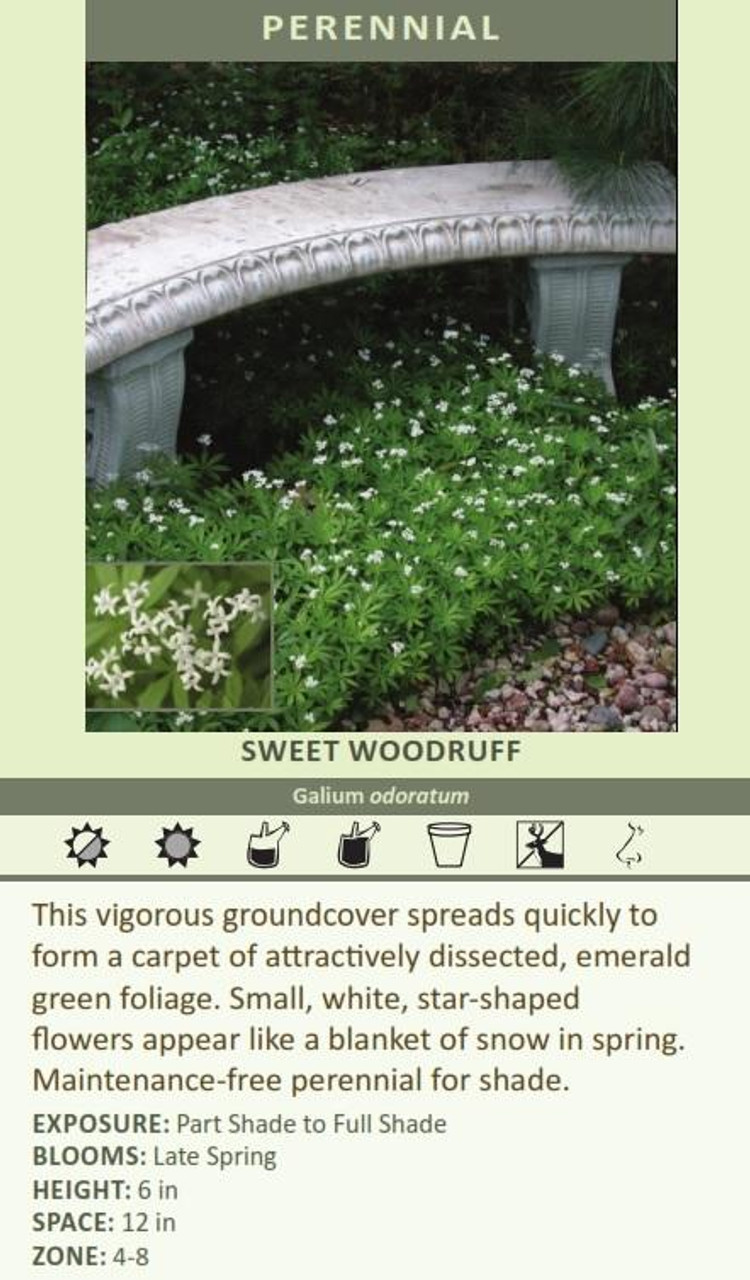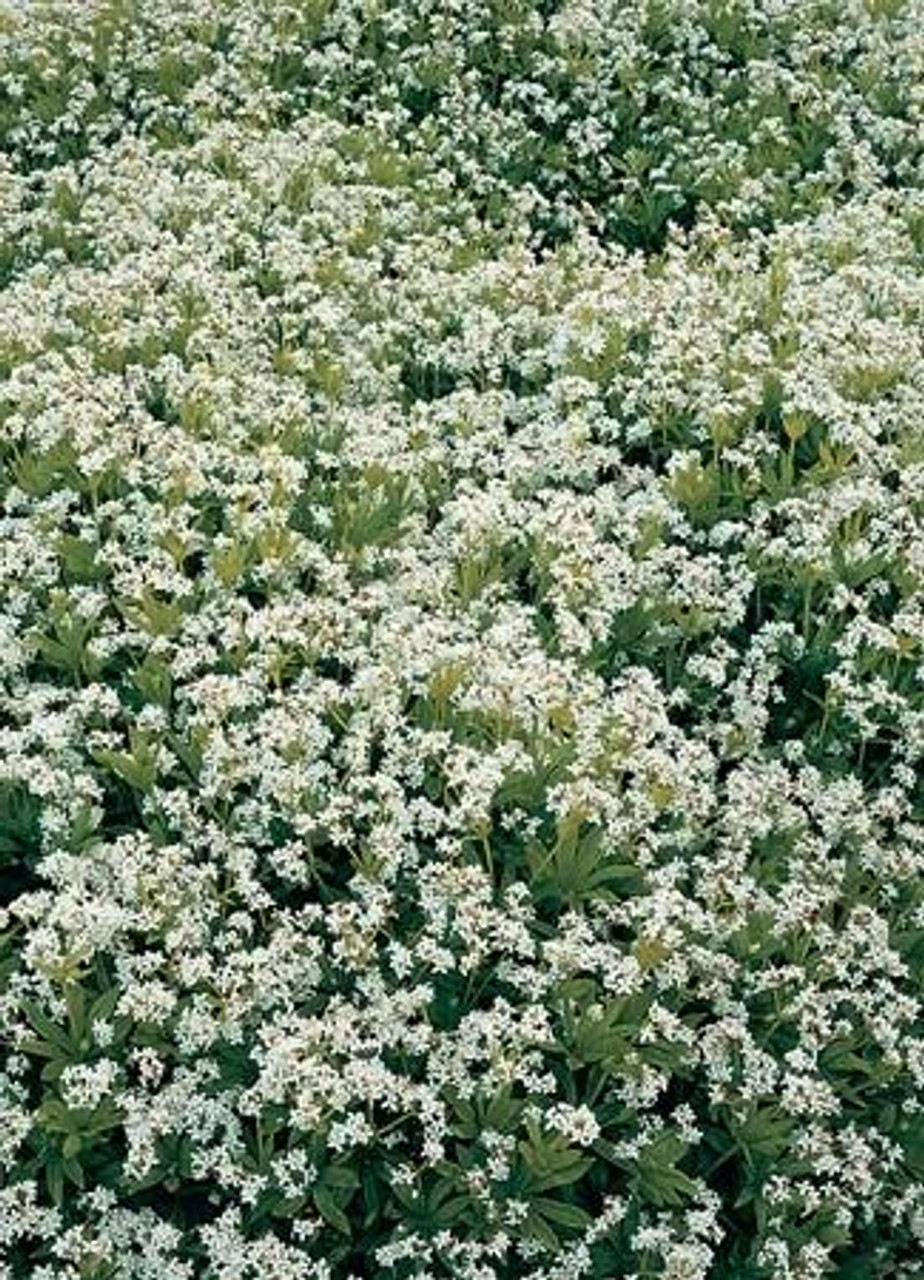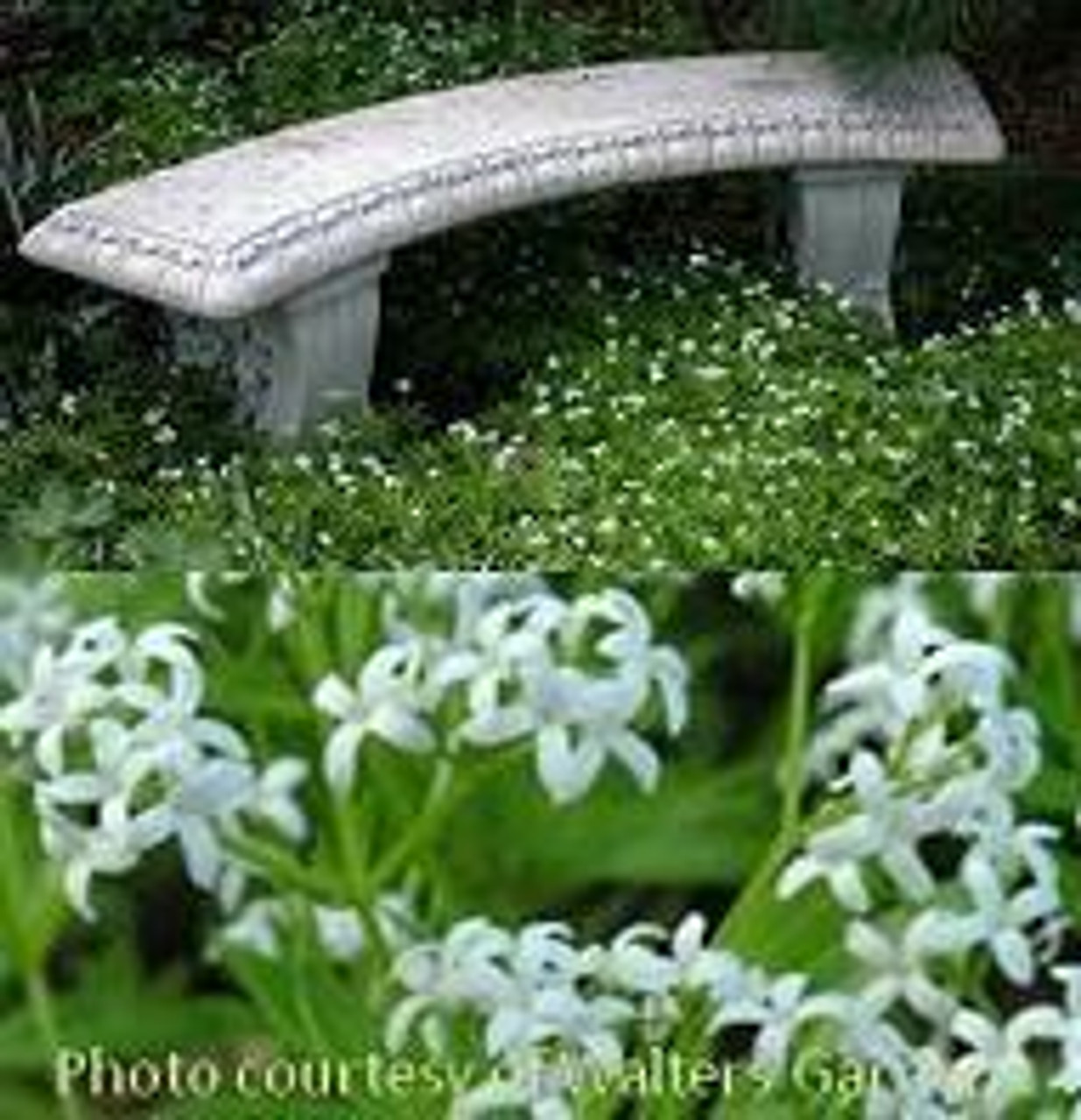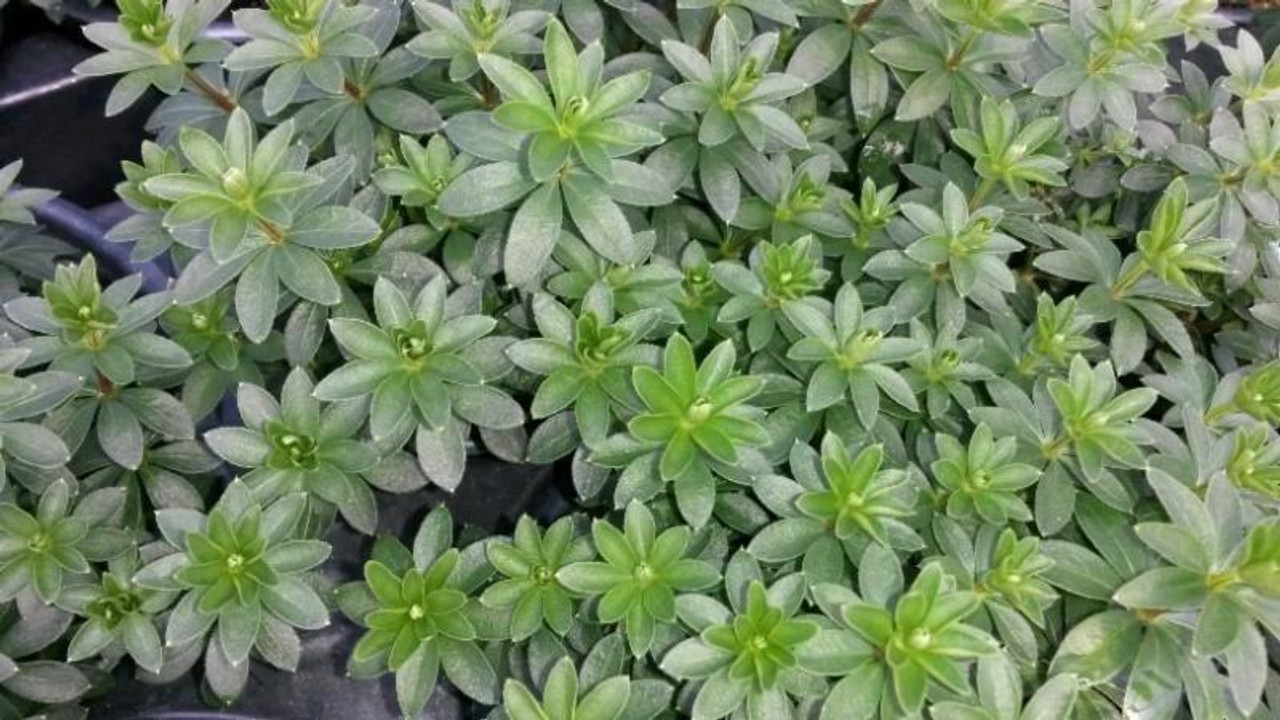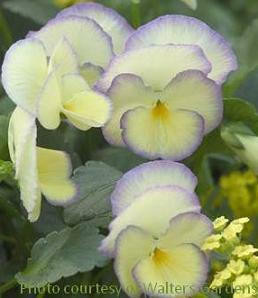Product Description
Galium odoratum
Common Name: Sweet Woodruff.
Zones 4 to 8
Part Shade to full shade.
Mature height of 6 to 12 inches and a spread of 12.5 inches.
A vigorous, herbaceous, mat-forming, perennial ground cover.
Galium odoratum, commonly known as sweet woodruff, is a charming, low-growing perennial that is beloved for its fragrant foliage and delicate white flowers. It is a fantastic addition to shade gardens and woodland settings. Here is a closer look at what makes it special:
Appearance:
- Flowers: Sweet woodruff produces small, star-shaped, white flowers that bloom in loose clusters from April to May. The flowers have a delicate, sweet fragrance that intensifies when they are dried.
- Foliage: The plant has bright green, lance-shaped leaves that grow in whorls of 6-8 around square stems. The leaves release a sweet, hay-like fragrance when crushed or cut, which is where the plant gets its common name.
Growing Conditions:
- Light: Thrives in partial shade to full shade, making it ideal for woodland gardens, shady borders, or underplanting trees and shrubs.
- Soil: Prefers moist, well-drained soil that is rich in organic matter. It can tolerate some dryness, but consistent moisture will help it look its best.
- Hardiness Zones: Hardy in USDA zones 4-8, making it suitable for a wide range of climates.
Uses:
- Groundcover: Sweet woodruff is a popular groundcover for shade gardens. It spreads by creeping rhizomes and self-seeding, forming a dense mat that helps to suppress weeds.
- Edging: It is also a great choice for edging walkways or garden beds.
- Woodland Gardens: Its delicate flowers and fragrant foliage make it a natural fit for woodland gardens.
- Containers: Sweet woodruff can also be grown in containers, where its cascading foliage and fragrant flowers can be enjoyed up close.
- Dried Flowers: The fragrant flowers and leaves can be dried and used in potpourris or sachets.
Additional Benefits:
- Deer and Rabbit Resistant: The foliage is generally unappealing to deer and rabbits.
- Low Maintenance: It is a relatively low-maintenance plant that does not require much care once established.
- Attracts Pollinators: The flowers attract bees and other pollinators to the garden.
Things to Consider:
- Spreading Habit: Sweet woodruff can spread aggressively in ideal conditions. It is important to monitor its growth and control its spread if necessary.
- Dormancy: In hot, dry conditions, sweet woodruff may go dormant in mid-summer.
Overall, Galium odoratum (sweet woodruff) is a charming and versatile plant that is perfect for adding fragrance and texture to shade gardens. Its delicate flowers, fragrant foliage, and ease of care make it a favorite among gardeners.
Ten (10) plants in quart containers per flat (or tray).
Other Details
The most important part of the plant is its root system. Healthy roots are the foundation of a healthy, vibrant plant. The type of plug container used is based on the specific needs of the plants. Perennials offered as bare root traditionally perform better when planted as bare root.Planted in a specialized mix, potted plants have well established root systems. Top growth stage will vary depending on the current life cycle and time of year when shipped. In Winter and early Spring dormant plants may be shipped. Dormant plants may be planted right away, even before the last frost date.
Most bare root varieties are field grown for at least one season, though Hemerocallis and Hosta are grown for two seasons. The bulk of the soil is removed during the harvesting process and the tops of most varieties are trimmed back to the crown. They are graded, packed in shredded aspen or sphagnum moss and stored in freezers until ready to be shipped.
See our Container Sizes and Bare Root Perennials pages for more information.
Plant information and care is provided in the Overview section, Plant Genus Page and general information is provided in the Planting Care & Guides. Additional questions can be asked on each Plant page.
Plant Spacing: Using the maximum mature spread or width of a plant to guide spacing, ensures space to grow to full size. To fill an area sooner, plant them closer together. Just remember, future thinning or transplanting may be needed.
Water: Keep a close eye on newly planted perennials, especially throughout the first growing year. Most early plant loss is due to too much or too little water!

